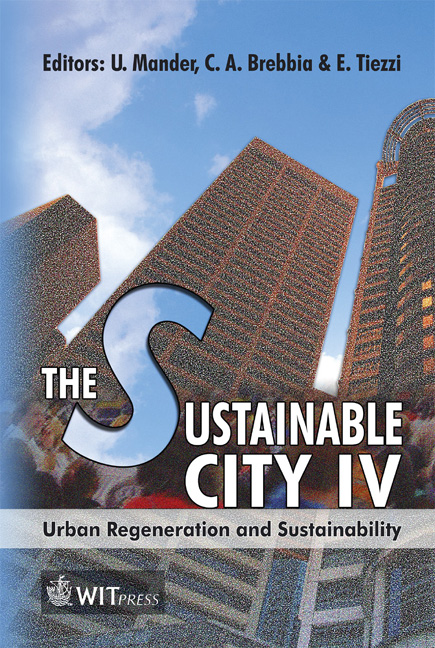Sustainability In Cities: The Green Areas And Climatic Comfort As Fundamental Parameters
Price
Free (open access)
Transaction
Volume
93
Pages
11
Published
2006
Size
604 kb
Paper DOI
10.2495/SC060081
Copyright
WIT Press
Author(s)
F. Gómez, V. Sifre, L. Montero, V. De Vicente & L. Gil
Abstract
This paper describes the methodology developed by the authors to analyze the influence of \“green areas” on the urban comfort of the city of Valencia, taken as the prototype of Mediterranean cities. Based on the analysis of its climatologic conditions, different \“comfort indices” are used to study several characteristic districts of the city of Valencia which globally define the urban behaviour of this city. Some of these comfort indices have been formulated in terms of the existing green areas; the results obtained permit one to estimate the amount of the green area required in each district to be considered theoretically comfortable. This methodology can be very useful to urban planners in the design and distribution of green areas in cities. The study has been completed with a simultaneous survey on human perception of thermal control. The main conclusion is that green zones play an important role in the thermal comfort of the city and therefore they can be considered one of the most important aspects to take into account in the analysis of urban sustainability. Keywords: urban climate, green zones, urban planning, urban comfort, sustainability, human perception, Valencia (Spain). 1 Introduction Most of the world’s population lives in big cities. Man’s activities have dramatically changed the environmental and climatic characteristics of the urban areas. This particular phenomenon has been extensively studied in the literature and many works have been developed to analyze the factors that affect human comfort in big cities [1].
Keywords
urban climate, green zones, urban planning, urban comfort, sustainability, human perception, Valencia (Spain).





